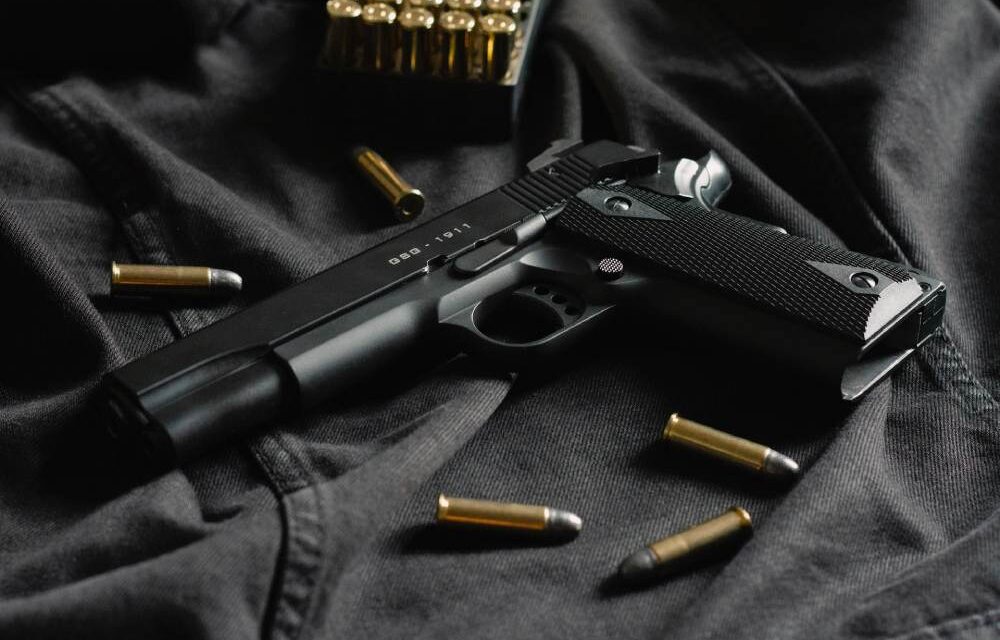My morning ritual begins with coffee and my iPad news feeds. But this morning, I look at a headline and ask my wife, “Which mass murder is this?” As soon as I say it, I realize that I’ve crossed into new territory where shock, bewilderment, numbness, and outrage shape the topography. I don’t want to read the stories—especially when they involve children—but I can’t help it. I don’t want to watch the horror unfolding on the screen but I can’t not look. Each event reminds me that I’ve survived two mass shootings, one at the University of Texas, and one at Penn State.
For more than half a century, I’ve been trying to understand these events and those that followed. Some questions I’ve answered—the nightmares don’t go away, the scars remain. But, four questions continue to trouble me.
The question of guns in the home. Firearms now rank as the No. 1 cause of death among children. Often a child’s death results from easy access to what looks like a toy. In particular, children find pistols irresistible. They play with toys and a pistol looks like a toy. Children pick them up, they aim them at each other — and, they go off. Tragedy also stalks the other end of life’s arc. The largest number of gun deaths come from suicides. For a despondent male, ownership of a pistol can become an overwhelming temptation to end one’s life. Why don’t we acknowledge the danger of guns in the home?
The question of guns for self-defense. The vast majority of individuals who buy guns, mostly pistols, say that in a dangerous world a person must protect oneself and one’s family. For self-defense, the weapon must be ready at any moment, loaded and quickly accessible everywhere you go — not in the gun safe. Yet, when people fire their guns and hit someone, only a tiny percent do so in self-defense. Instead, gun accidents in the home are up, and so are the number of children killed. Why don’t we own up to the menace of accidental discharges?
The question of force and penalty. I read common-sense advice that every community should invest in fast-reaction SWAT teams. Images of uniformed men in black wearing body armor intend to evoke a sense of security. However, their record in responding to violent incidents is mixed, they do not prevent shootings. I also read common-sense calls for harsher penalties to deter would-be killers, “If these assassins know what’s coming to them, they’ll think twice.” Yet, Texas, the state that enforces the death penalty more than any other, ranks No. 2 for mass killings. Young males with firearms who want to use them will act, regardless of some abstract retribution, because the threat of a death sentence does not prevent murder. Why don’t we acknowledge the futility of retribution?
The question of mass-murderers and race. A significant number of high-profile mass murderers have been white nationalists who killed Mexicans, Blacks, Jews, and LGBTQ folks simply for being who they are. Their motivations arise from the racial hostility rooted in American culture. Yet, when the killers are condemned (sometimes they’re celebrated), their White racism is downplayed. Imagine that over a period of years Whites were slaughtered by Mexicans or Blacks, there would arise an overwhelming demand to disarm them all, and there would be no concern for their 2nd Amendment rights. Why don’t we confess to the link between mass murder and racism?
Mass killings have been on my mind for over half a century, and I’ve been tracking the gun debate since it emerged in the 1970s. I believed then, as I still do, that liberals erred when they lumped all gun owners together. Growing up in a San Antonio family that hunted and fished gave me respect for the weapons and for their value in putting food on the table. Guns had their place.
But today, these distinctions have lost out to either-or demands from each side. If the eventual answer to bad people with guns is good people with guns, we will become a society where people with guns are more equal than others—but with no greater safety. That’s why honest answers to these questions are important for all of us. There’s no time like the present.
Jorge Reina Schement
Emeritus
Vice Chancellor, Dean
Distinguished
Professor of
Communications Policy,
Affiliated American Studies, and
Latino Studies
Dept. of Journalism & Media Studies
JR Schement
School of Communication & Information
Rutgers University—New Brunswick









